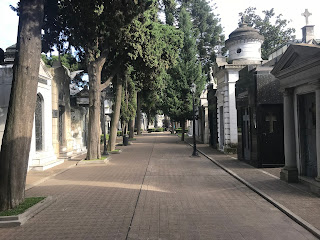Once we got on the road, we headed to the Arcor factory. Arcor is Argentina's leading food supplier, and the number one manufacturer of candy worldwide. The company began in Cordoba in 1951 as a candy factory, and has since grown to have 49 plants in Latin and South America, and produces lines of products that include food, agricultural products, a confectionery, food packaging, and chocolates. Arcor also produces energy, and since last year, they acquired 14,000 hectares of forest and a dairy. As a result, they have become very vertically integrated, from producing their own dairy products, to manufacturing their own packaging for their goods. Arcor still remains a family owned company, while employing 20,000 employees.
At the San Pedra complex, we were able to see their production lines of dry corn milling, alcohol distilling, vegetable oil extraction, and extruded products. The dry corn milling line has the capacity to process 340 tons per day and produce products such as corm meal, flaking grits, flour, and bran. We were able to see how the components of the corn kernel were separated to produce a variety of products. The alcohol distilling line has the capacity to product 84,000 liters per day. We also saw the extruded products line, which produces 44 tonnes of crude products, 24 tonnes of refined products, and 100 tonnes of pelleted products per day. This line creates products such as corn pellets, gum, crude oil, soap-stock, and refined corn-oil. Finally, we saw the extruded products line with a capacity of 5 tonnes per day. The products include things like crisp toppings and rice thin crackers.
After lunch at Arcor, we loaded up the van for the last time and headed to the airport. These last two weeks have been extremely educational, and the experience we've had is invaluable. Hope to see you again soon, Argentina.
--Sara and Ryan

























